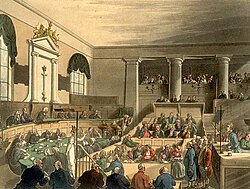Criminal Justice

|
Criminal Justice Learning Project
part of the School of Law
|

|





|
Welcome to the Criminal Justice Learning Project, part of the School of Law. Criminal justice is distinct from the field of criminology, which involves the study of crime as a social phenomena, causes of crime, criminal behavior, and other aspects of crime. Criminal justice emerged as an academic discipline in the 1920s, beginning with Berkeley police chief August Vollmer who established a criminal justice program at the University of California, Berkeley in 1916. Vollmer's work was carried on by his student, O. W. Wilson, who led efforts to professionalize policing and reduce corruption. Other programs were established in the United States at Indiana University, Michigan State University, San Jose State University, and the University of Washington. Until the 1960s, the primary focus of criminal justice in the United States was on policing and police science. In the late 1960s, with the establishment of the Law Enforcement Assistance Agency (LEAA) and associated policy changes that resulted with the Omnibus Crime Control and Safe Streets Act of 1968. LEAA provided grants for criminology research, focusing on social aspects of crime. By the 1970s, there were 729 academic programs in criminology and criminal justice in the United States. |
Participants[edit | edit source]The histories of Wikiversity pages indicate who the active participants are. If you are an active participant in this project, you can list your name here (this can help small projects grow and the participants communicate better). |
Project news[edit | edit source]
|
Resources[edit | edit source] |

